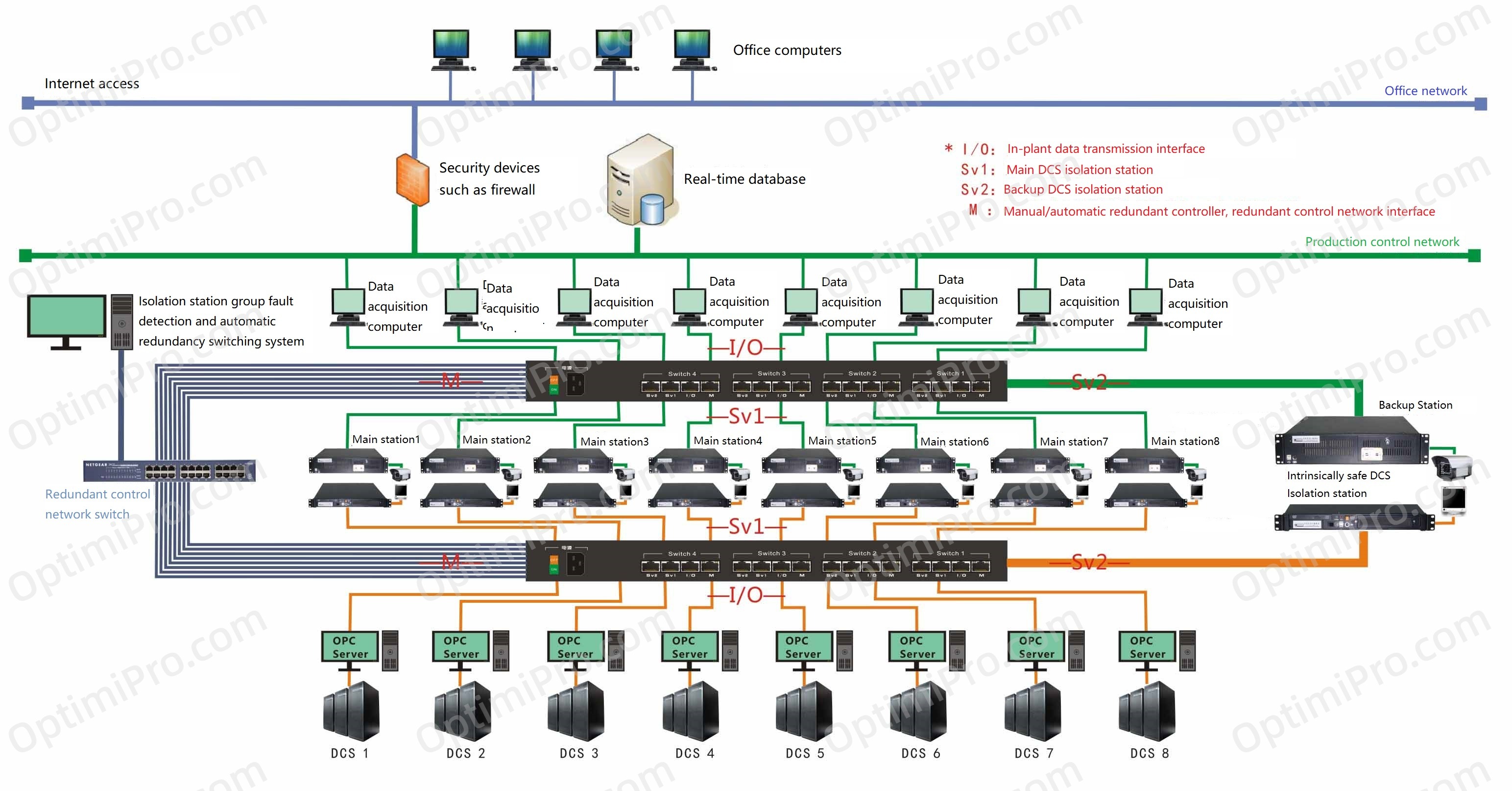OPTIMIPRO | Copyright 2025.

The intrinsic safety DCS isolation station adopts' photographic data transmission technology 'to isolate the network between DCS and DCS, and between DCS and database, achieving one-way data transmission from DCS to database. In industrial production, it is necessary to command and schedule production based on real-time data. Therefore, there is a high requirement for the reliability of production data transmission. Although the intrinsic safety DCS isolation station itself has high reliability, as an electronic device, it cannot guarantee that there will be no failures throughout the entire operating cycle. And once there is a malfunction, it will cause interruption of data transmission. There is a redundancy solution for the intrinsic safety DCS isolation station system, which is to install two sets of DCS isolation stations at a single isolation point, with one main station online and the other set as backup. After the fault detection system detects a fault in the main station, it will issue an instruction to switch to the backup station to ensure data continuity. This redundancy scheme is called a one backup for one redundancy system. The one backup for one redundant system improves the reliability of the isolation system, but the investment in implementing redundancy is at least twice that of non redundant systems, with a relatively high economic cost. In order to solve the disadvantage of large investment in one backup for one and meet customer needs, the company has invested in research and development and designed a one backup for multi-main station solution, which can use one backup station equipment as an online redundant station for multiple isolation stations. When one of the multiple isolation stations encounters a problem, it automatically (or manually) switches to the backup station to continue data transmission and DCS safety isolation. At this time, the faulty main station can be taken offline for maintenance. An additional backup system can achieve redundancy in a multi station system with lower investment, thereby improving the reliability of the entire isolation system.
The redundant system of one backup for multi-main stations mainly consists of multiple master stations, one backup station, TC100 redundant controllers, and a "fault detection and redundant control system".
1、Master(Main) Isolation Station: The master isolation station is a standard intrinsic safety DCS isolation station, which can be single input or multi input, using OPC protocol as input/output interface.
2、Backup station (multi backup): It is a backup station specifically designed for backup system for multiple master stations. This backup station has multiple input and output ports. Each pair of input/output interfaces of the backup station corresponds to an isolated master (main) station. In this way, if there is a problem with the main station, as long as the input and output of the faulty main station are switched to the corresponding input and output of the backup station, the data that the original faulty station can be transmitted through the backup station.
3、Redundant controller: Redundant controllers are mainly used for switching between primary (master or main) station and backup station. The redundant controller has two working modes: one is manual switching mode, which can manually force the switch between the main and backup station, and the other is automatic mode, which automatically switches according to the instructions of "fault detection and redundant server".
4、Fault detection and redundancy control system: Real time monitoring of the health and working conditions of each connected isolation station, these status data is transmitted to the fault monitoring and redundancy control server. If a fault is detected in the isolation station, the server sends instructions to the redundancy controller to switch between the master and backup stations.

- End -